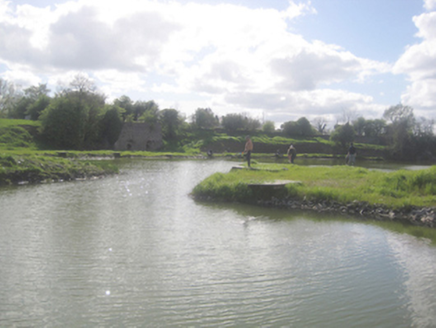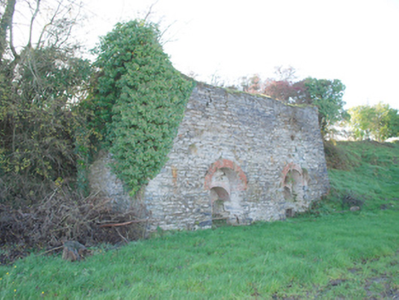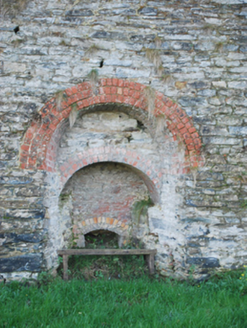Survey Data
Reg No
40907125
Rating
Regional
Categories of Special Interest
Social, Technical
Original Use
Kiln
Date
1840 - 1860
Coordinates
234411, 402423
Date Recorded
08/11/2010
Date Updated
--/--/--
Description
Freestanding two-bay lime kiln on rectangular-plan, erected c. 1860. Tapers outwards towards base. Now out of use. Constructed of coursed rubble stone masonry. Round-headed opening to front (south), the former oven aperture, having red brick voussoirs to arch and with series of segmental-headed brick arches to interior. Former loading chambers to the south having rubble masonry construction.. Built into hillside adjacent to former quarries. Earthen embankment to rear formerly giving access to loading chambers. Set back from road in rural location to the north of Lifford.
Appraisal
This interesting former double lime kiln, probably erected during the second half of the nineteenth-century, survives in good condition and retains its early character and form. It is well-built using local rubble stone masonry and is an appealing and unassuming element of the agricultural/industrial and social heritage of County Donegal. The embankment to the rear was built/modified to allow for the easy loading of stone through an opening in the roof structure, while the apertures to the front were used to fire the oven to burn the stone and produce lime. Lime kilns appear to have come into popular use in Ireland during the eighteenth century and were a very common feature in the rural landscape up until the first decades of the twentieth century. They were used to burn limestone to produce lime, which was used as an agricultural fertiliser and spread on agricultural land, or in construction as a mortar and a render. Lime was also used for lime-washing buildings, particularly farm buildings, as it was regarded as a cleansing agent at the time. Small rural lime kilns started to go out of common usage during the late nineteenth-century with the advent of industrial-scale lime production facilities and improvements in the transport network, particularly the development of the railways. This was one of a number of lime kilns in the local area c. 1905 associated with limestone quarries adjacent to the north. The scale of this double kiln suggests that it formed part of an industrial site as opposed to being used by a local farmer to supply his needs. This simple feature is an interesting feature in the landscape to the north of Lifford, and is an integral element of the built heritage of the local area.





